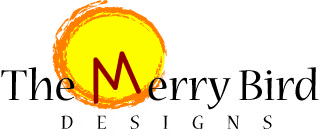
Has trying to keep up with your inbox got you feeling like a hamster on a wheel, running faster and getting nowhere? Help is here!
By Anne Fisher, Fortune senior writer
May 21 2007: 3:29 PM EDT
(Fortune) -- Here is a startling bit of arithmetic: If you get and send 100 e-mails a day, that adds up to 24,000 messages annually, on which you probably spend an average of 100 workdays. If you could manage to reduce the amount of e-mail you send and receive by 20%, you'd free up 20 workdays a year to use for other things, like thinking up new ideas that could help further your career or, heck, taking a longer vacation.
So say co-authors Mike Song, Vicki Halsey, and Tim Burress in a book called The Hamster Revolution: Stop Info-Glut and Reclaim Your Life! (Berrett-Koehler, $19.95). Song and Burress are co-founders of a consulting firm, Cohesive Knowledge Solutions (www.cohesiveknowledge.com), that helps companies cut down on wasted e-mail; Halsey is vice president of applied learning at the Ken Blanchard Companies (www.kenblanchard.com). Together and separately, they've coached thousands of employees at HP, Nike, Oracle, Wells Fargo, Pfizer, and Procter & Gamble, among others.
More from FORTUNE
A pretext for revenge
ExxonMobil: Profits and discontent
The Buffett mystery
FORTUNE 500
Current Issue
Subscribe to Fortune
And why do these companies care how much time people spend on e-mail? Well, time is money. Let's suppose, for instance, that dealing with your e-mail sucks up 75 days a year, and one-third of that time is thrown away on useless tasks like reading "reply to all" messages that don't concern you or figuring out how to answer long, convoluted questions. Using an average knowledge-worker salary of $30 per hour, the authors point out that the cost of 25 wasted days is about $6,000 a year per employee - or, from the company point of view, $6 million per 1,000 knowledge workers. Yikes.
So how can you cut back on the time e-mail takes up (not to mention the aggravation it can cause)? Ten suggestions that may help:
Send less. Think hard before you use the "reply to all" and "cc" features, and use group distribution lists sparingly. By targeting your e-mails, rather than spraying them, you'll be more efficient and effective.
Quit boomeranging. Send 5 e-mails and you'll get, on average, 3 responses, most of which aren't necessary. If you eliminate just 1 in 5 of your outgoing e-mails, you'll instantly shrink the incoming volume, and save time on needless back-and-forth exchanges.
Stop - then send. Before hitting the "send" button, ask yourself: Is this information timely, topical, and targeted? Will it help the recipient do his or her job better? If not, skip it.
Be polite, up to a point. Not every e-mail requires a reply, especially if it's just a routine "thanks!" The authors recommend that, with the people you e-mail (and who e-mail you) most often, you try including an acronym in the subject line like "NTN" (no thanks needed) or "NRN" (no reply needed) - a simple but effective time-saver.
Schedule live conversations. Instead of sending an e-mail that will initiate a long back-and-forth discussion, try scheduling an in-person or phone meeting instead. You'll often get a lot more done in less time.
Strengthen your subject lines. Vague subject lines confuse recipients and make e-mails hard to locate later. One-word categories, like "Request" or "Confirmation," along with relevant information like dates or times, add clarity and context to your messages.
Structure matters. Avoid sending a wall of words. Instead, start every message with a greeting of no more than 8 words. (For example: "That was an interesting meeting yesterday.") Then use the ABC method to divide your e-mail into 3 distinct sections: Action (stating your purpose), Background (presenting your key points), and Close (clarifying the next steps).
Save purposefully. Searching for an old e-mail can eat up untold amounts of time, so be picky about what you save. Ask yourself: What are the odds I'll need this information later? Could I get it just as easily from the Web or somewhere else? Is it important to what I'm working on - really? You'll save less and find more.
File smart. You might have several overlapping e-mail folders, so "Stuff from the Boss" could contain anything from a performance review to a lunch invitation. Instead, create a smaller number of folders and label them according to content (not sender or some other criterion). You'll file and find information faster.
Coach - or suffer. Alas, sending better e-mails yourself won't guarantee that others will follow your lead, unless you ask them to. "Offer your frequent senders a few really good tips," the authors write, "or suffer through their bad e-mails."
Is your inbox overflowing? What do you do to keep your e-mail under control? Post your thoughts on the Ask Annie blog.









